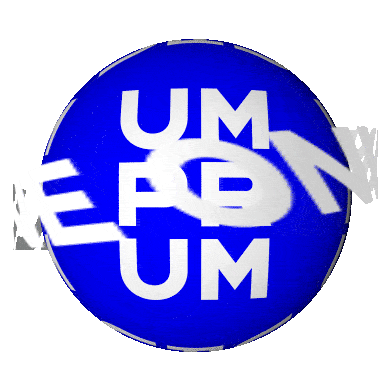


Look back at Artsemester winter 2022/2023
Between January 26th and February 1st, 2023 – i.e. the following week after the end of the closing period and the defense of final works – the Artsemester was traditionally held – an exhibition opening the doors of the individual UMPRUM studios, where the exhibited works were created.
Artsemestr is the only occasion when the general public can visit the interior facilities of the building on Jan Palach square and thus can perceive the school from a different perspective compared to visiting the publicly accessible UM Gallery in the lobby. The exhibition is not conceived uniformly, it is not united by a central theme, each of the doors of the 25 studios offers a different theme and layout solution, and therefore also a certain degree of surprise. The imaginary link between the different assignments, however, is created by the students themselves, whose projects, across various representational media, often have similar characteristics, such as environmental and social themes or attempt to draw attention to various issues with a proposal for a possible alternative solution.
This time, the exhibition of final works also used the potential of the second and newer Technological Building in Mikulandská Street, where visitors could view the multimedia projects of the newly created study module Planet B dealing with environmental topics in the full scope of teaching in the spacious atrium.
Architecture 1
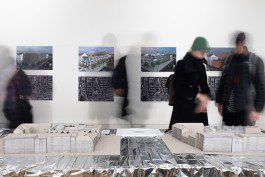
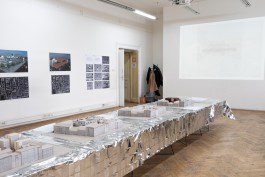
Studio of Architecture I dealt with the theme of the marketplace as a historically important place with cultural overlap. The assignment had the title of Services/Shop/Market and the resulting proposal was to be located in the Na Knížecí location in Prague.
Architecture 2

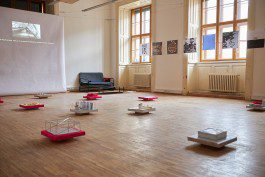
Students from Studio of Architecture II, newly appointed as a Studio with a guest teacher at the Department of Architecture, devoted themselves to the production of ideas and works developing reflections on new forms of living that seek to enable the functioning of a freer and fairer society. They then specified these ideas under the name Future Architectures: a laboratory of utopias using visualizations and presented them through a film.
Architecture 3
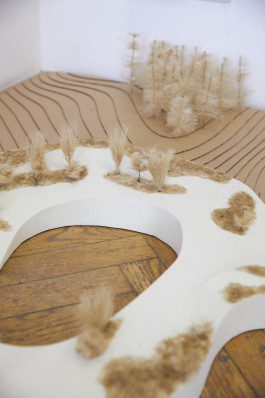
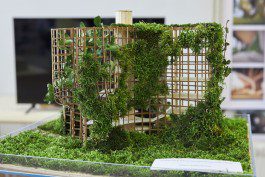
Students of the Studio of Architecture III used a new image creation tool, artificial intelligence generating experimental architecture based on assigned texts and considerations to fulfill the Machine Imagination assignment. The visual outputs were then the inspiration for the creation of the final models.
Architecture 4
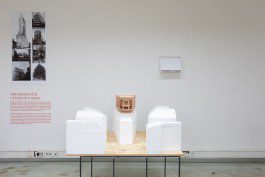
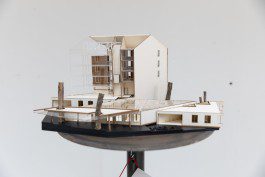
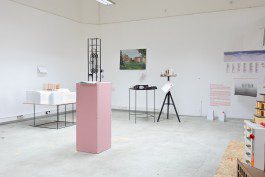
Studio of Architecture IV was involved in the search for unfinished projects in the country throughout history. In addition to designing unfinished buildings, students thought about the potential of rebuilding and reusing existing houses.
Ceramics and Porcelain
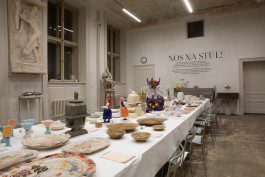
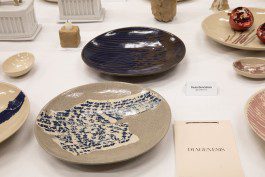
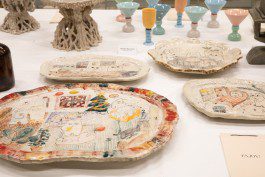
Studio of Ceramics and Porcelain presented the theme Nose to the Table using one long set table, which encouraged visitors to engage with tableware with an emphasis on craftsmanship. This resulted in dozens of different items for different daily routines and occasions.
K.O.V.
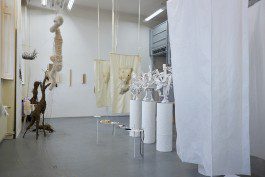
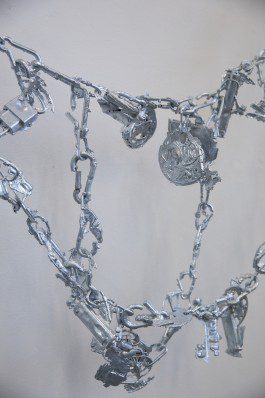
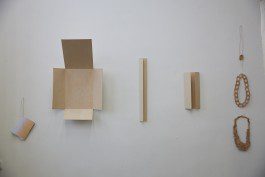
Students of the Studio of Concept – Object – Meaning (K.O.V.) demonstrated their idea of an ideal product that defines their personality for the Jewel for me assignment. The assignment gave students the freedom to use a range of techniques and material selections. In addition to jewelry made of noble materials, textile or wooden objects were also created.
Glass
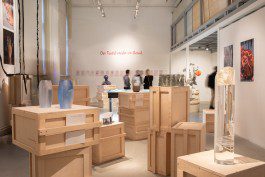
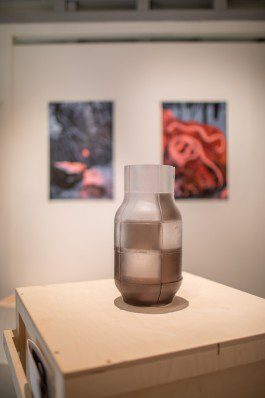
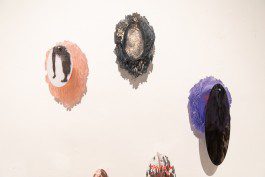
“Der Teufel steckt im Detail” served as a source of inspiration for the creation of an object on the theme of Detail, which was created in the Studio of Glass. The students elaborated on the theme and created both fine art and utilitarian objects, often with combinations of glass and other materials, or with an emphasis on detail made with a specific technique.
Textile Design
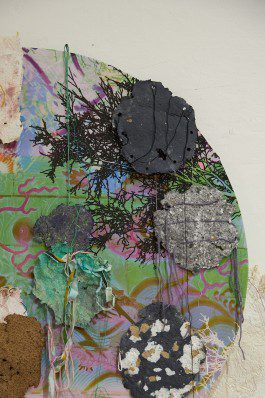
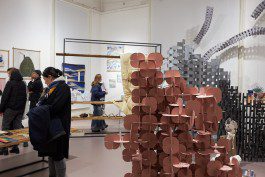
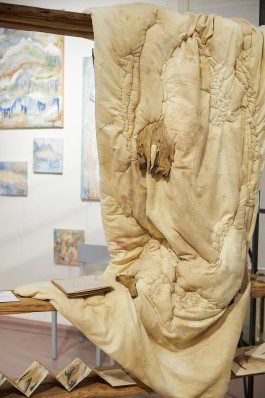
The material assignment Cellulose provided the students of the Studio of Textile Design with the possibility of many different views and approaches. The outputs included an emphasis on recycling and reuse of materials, such as paper, in the context of textile techniques, but also the adoption of traditional techniques and autonomous processing of the raw material itself.
Fashion and Footwear Design
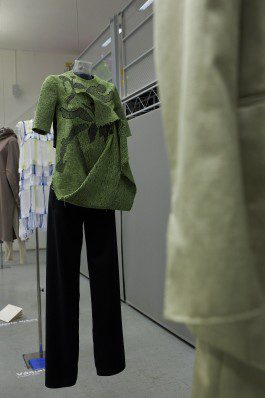
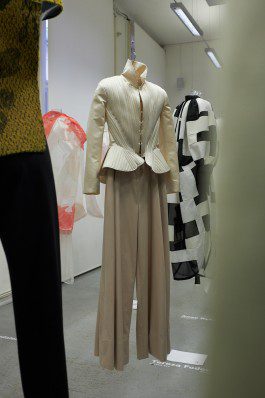

The My brand assignment, included the creation of models, a visual identity, and a price list, outlining the reality after graduation for students of the Studio of Fashion and Footwear Design. Here, too, emphasis was placed on the sustainability of the materials used and their craftsmanship.
Fashion Design
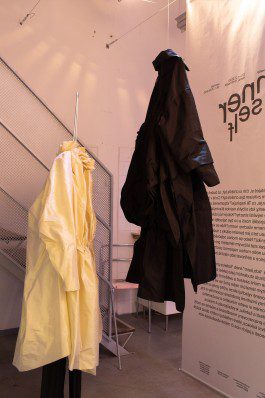
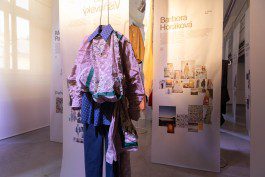
Studio of Fashion Design had the same as Studio of Concept – Object – Meaning (K.O.V.), which focused on the personality of all individuals and their free creative development. Under the assignment "Who I am, a collection for myself", they tried to perceive their own identity using their wardrobe and what they emphasize when creating a collection, from the visual and material point of view to comfort and other aspects.
Fine Arts I (Sculpture)
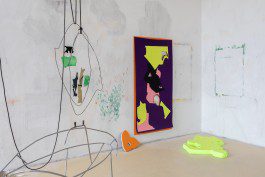
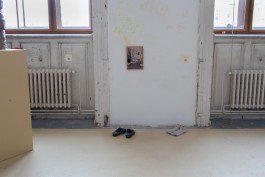
The Studio of Fine Arts I, originally defined as the Studio of Sculpture, allows students to present their free work. In this way, multimedia objects with ideological overlaps on various topics were created.
Fine Arts II (Painting)
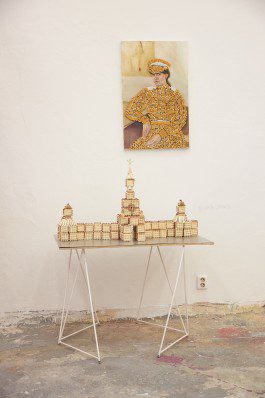
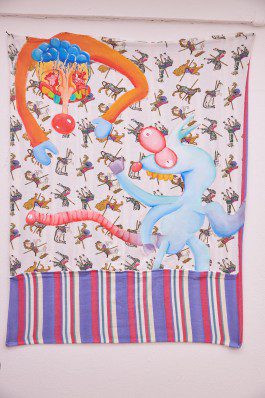

In the Studio of Fine Arts II, formerly the Studio of Painting, they presented free work. However, they were guided by a sub-theme referring to the Dadaist center Cabaret Voltaire.
Fine Arts III (Intermedia)
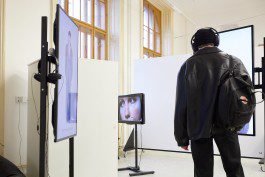
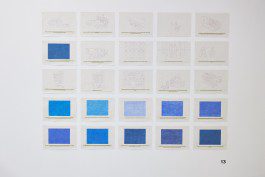
The Studio of Fine Arts III let the students also work on a free assignment for three weeks of the finals period. Various wall and spatial objects or video projections with ideological overlap appeared among the outputs.
Fine Arts IV (Photography)
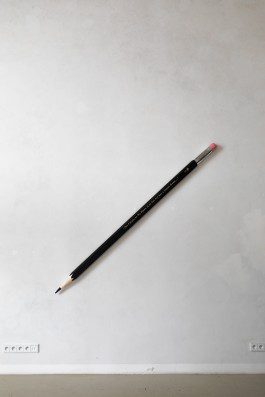
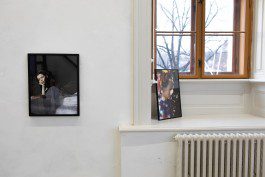
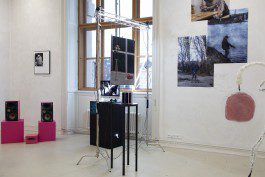
The Studio of Fine Arts IV has chosen for students, the aforementioned as well, the option of presenting the work at their discretion. Spatial objects were also created among the photographs that are characteristic of the studio.
Photography 2
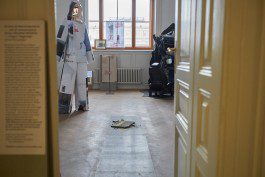

The main motive behind the assignment Highway Mindway – urban photography was a different way of thinking about public space and its formation, the central motive being the Prague highway and its vision for the future. The studio then presented the work at an exhibition in the Czech Center in London.
Design and Digital Technology
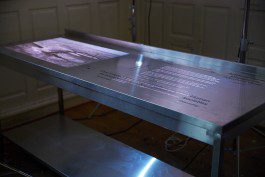
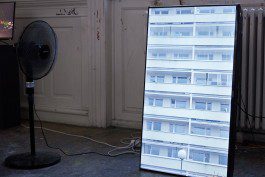
The final assignment in the Studio of Design and Digital Technology, entitled Life under the Surface, was a continuation of the semester's preparation and a deeper introduction to the medium of the moving image - narrative storytelling through the medium of video games.
Graphic Design and New Media
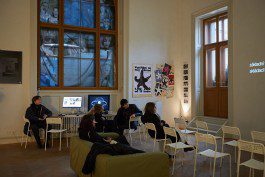

The Studio of Graphic Design and New Media dealt with the System, as a basic constant, its application, and solutions in the globalized environment of current media. The outcome was a video on the mentioned topic.
Film and Animation
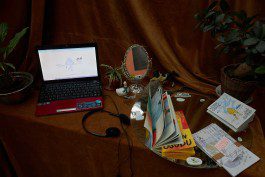
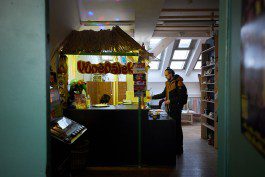
The students of the Studio of Film and Animation focused on the search for the Scent of Distance and its integration into audiovisual work – a film, which was complemented by a specific installation.
Graphic Design and Visual Communications
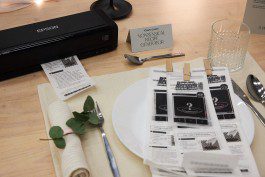
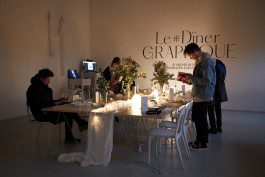
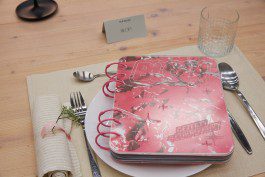
The Studio of Graphic Design and Visual Communications was given the task of creating a recipe book with a minimum number of 64 full-color pages containing personal or family recipes. Various celebratory books about individual ingredients or cooking in innovative ways were created under the topic of Cookbook.
Illustration and Graphics
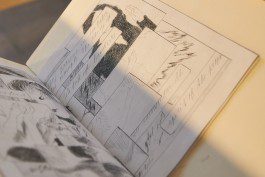
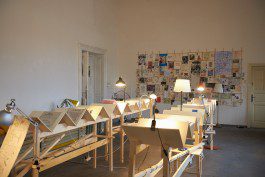
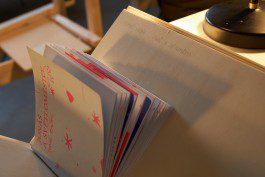
Students from the Studio of Illustration and Graphics focused on the so-called Wimmelplakat, a poster with an elaborate illustration that hides a game. They also worked on several books - a slow and fast one, a handmade and original piece, as well as a non-manuscript book using alienated material.
Type Design and Typography
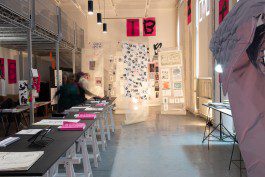
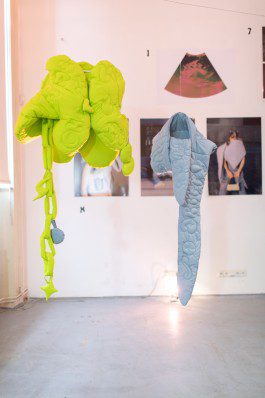
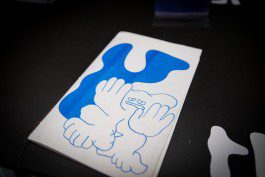
In the Studio of Type Design and Typography, they investigated the relationship between analog and digital methods in the field of typography and reproduction using the assignment "From physical to digital - the journey there and back again".
Planet B
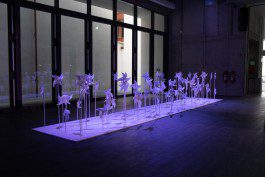
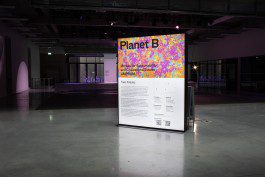
The Planet B module dealing with sustainability and civilizational issues presented a project on the subject of Toxic futures at the Mikulandská Technology Center, which traces the ways of energy development and their impact on the planet and life on it. The works of students across specializations were presented using different display methods and outputs.
The Visiting Artist Studio
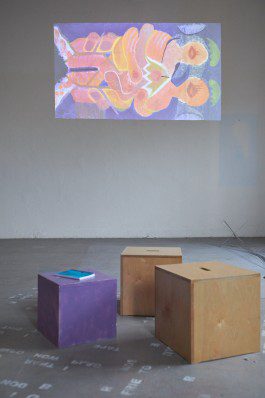
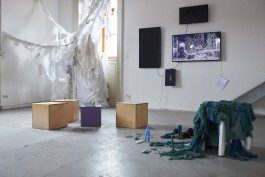
The Visiting Artist Studio with artist, filmmaker, and researcher Marwa Arsanios was dealing with building a structure and searching for an authorial platform for equality in the creation of a collective work. The acquired experience was then applied in a final free assignment.
Industrial Design
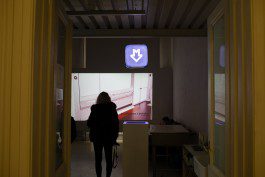
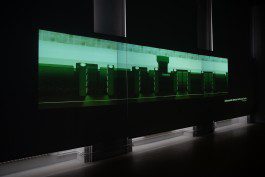
Students of the Studio of Industrial Design worked on autonomous metro designs for Prague in cooperation with the Škoda Group. First-year students traditionally focused on transforming shapes of natural objects into useful products.
Product Design
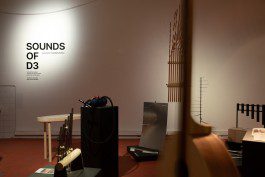
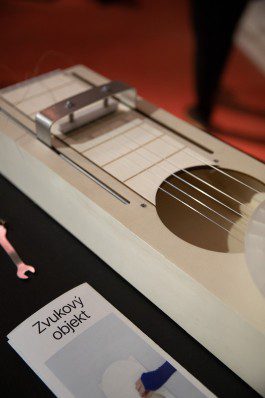
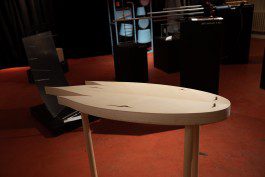
The Studio of Product Design worked on the topic of the role of (electronic) music in human development, and following that topic, students developed acoustic instruments or objects of traditional and experimental shapes by transforming the principles of musical instruments.
Furniture and Interior Design
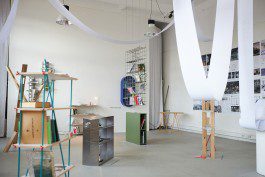
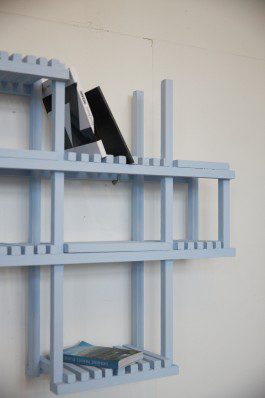
The students of the Studio of Furniture and Interior Design dealt with the topic of the Bookshelf, its implementation, and the subsequent creation of a real-size prototype.
The report was prepared by Karla Kislingerová (Studio of Textile Design)
Photo: Alžběta Chrudimská and Adriana Ingeli (Studio of Photography 2)
Look back at Artsemester winter 2022/2023
Between January 26th and February 1st, 2023 – i.e. the following week after the end of the closing period and the defense of final works – the Artsemester was traditionally held – an exhibition opening the doors of the individual UMPRUM studios, where the exhibited works were created.
Artsemestr is the only occasion when the general public can visit the interior facilities of the building on Jan Palach square and thus can perceive the school from a different perspective compared to visiting the publicly accessible UM Gallery in the lobby. The exhibition is not conceived uniformly, it is not united by a central theme, each of the doors of the 25 studios offers a different theme and layout solution, and therefore also a certain degree of surprise. The imaginary link between the different assignments, however, is created by the students themselves, whose projects, across various representational media, often have similar characteristics, such as environmental and social themes or attempt to draw attention to various issues with a proposal for a possible alternative solution.
This time, the exhibition of final works also used the potential of the second and newer Technological Building in Mikulandská Street, where visitors could view the multimedia projects of the newly created study module Planet B dealing with environmental topics in the full scope of teaching in the spacious atrium.
Architecture 1


Studio of Architecture I dealt with the theme of the marketplace as a historically important place with cultural overlap. The assignment had the title of Services/Shop/Market and the resulting proposal was to be located in the Na Knížecí location in Prague.
Architecture 2


Students from Studio of Architecture II, newly appointed as a Studio with a guest teacher at the Department of Architecture, devoted themselves to the production of ideas and works developing reflections on new forms of living that seek to enable the functioning of a freer and fairer society. They then specified these ideas under the name Future Architectures: a laboratory of utopias using visualizations and presented them through a film.
Architecture 3


Students of the Studio of Architecture III used a new image creation tool, artificial intelligence generating experimental architecture based on assigned texts and considerations to fulfill the Machine Imagination assignment. The visual outputs were then the inspiration for the creation of the final models.
Architecture 4



Studio of Architecture IV was involved in the search for unfinished projects in the country throughout history. In addition to designing unfinished buildings, students thought about the potential of rebuilding and reusing existing houses.
Ceramics and Porcelain



Studio of Ceramics and Porcelain presented the theme Nose to the Table using one long set table, which encouraged visitors to engage with tableware with an emphasis on craftsmanship. This resulted in dozens of different items for different daily routines and occasions.
K.O.V.



Students of the Studio of Concept – Object – Meaning (K.O.V.) demonstrated their idea of an ideal product that defines their personality for the Jewel for me assignment. The assignment gave students the freedom to use a range of techniques and material selections. In addition to jewelry made of noble materials, textile or wooden objects were also created.
Glass



“Der Teufel steckt im Detail” served as a source of inspiration for the creation of an object on the theme of Detail, which was created in the Studio of Glass. The students elaborated on the theme and created both fine art and utilitarian objects, often with combinations of glass and other materials, or with an emphasis on detail made with a specific technique.
Textile Design



The material assignment Cellulose provided the students of the Studio of Textile Design with the possibility of many different views and approaches. The outputs included an emphasis on recycling and reuse of materials, such as paper, in the context of textile techniques, but also the adoption of traditional techniques and autonomous processing of the raw material itself.
Fashion and Footwear Design



The My brand assignment, included the creation of models, a visual identity, and a price list, outlining the reality after graduation for students of the Studio of Fashion and Footwear Design. Here, too, emphasis was placed on the sustainability of the materials used and their craftsmanship.
Fashion Design


Studio of Fashion Design had the same as Studio of Concept – Object – Meaning (K.O.V.), which focused on the personality of all individuals and their free creative development. Under the assignment "Who I am, a collection for myself", they tried to perceive their own identity using their wardrobe and what they emphasize when creating a collection, from the visual and material point of view to comfort and other aspects.
Fine Arts I (Sculpture)


The Studio of Fine Arts I, originally defined as the Studio of Sculpture, allows students to present their free work. In this way, multimedia objects with ideological overlaps on various topics were created.
Fine Arts II (Painting)



In the Studio of Fine Arts II, formerly the Studio of Painting, they presented free work. However, they were guided by a sub-theme referring to the Dadaist center Cabaret Voltaire.
Fine Arts III (Intermedia)


The Studio of Fine Arts III let the students also work on a free assignment for three weeks of the finals period. Various wall and spatial objects or video projections with ideological overlap appeared among the outputs.
Fine Arts IV (Photography)



The Studio of Fine Arts IV has chosen for students, the aforementioned as well, the option of presenting the work at their discretion. Spatial objects were also created among the photographs that are characteristic of the studio.
Photography 2


The main motive behind the assignment Highway Mindway – urban photography was a different way of thinking about public space and its formation, the central motive being the Prague highway and its vision for the future. The studio then presented the work at an exhibition in the Czech Center in London.
Design and Digital Technology


The final assignment in the Studio of Design and Digital Technology, entitled Life under the Surface, was a continuation of the semester's preparation and a deeper introduction to the medium of the moving image - narrative storytelling through the medium of video games.
Graphic Design and New Media


The Studio of Graphic Design and New Media dealt with the System, as a basic constant, its application, and solutions in the globalized environment of current media. The outcome was a video on the mentioned topic.
Film and Animation


The students of the Studio of Film and Animation focused on the search for the Scent of Distance and its integration into audiovisual work – a film, which was complemented by a specific installation.
Graphic Design and Visual Communications



The Studio of Graphic Design and Visual Communications was given the task of creating a recipe book with a minimum number of 64 full-color pages containing personal or family recipes. Various celebratory books about individual ingredients or cooking in innovative ways were created under the topic of Cookbook.
Illustration and Graphics



Students from the Studio of Illustration and Graphics focused on the so-called Wimmelplakat, a poster with an elaborate illustration that hides a game. They also worked on several books - a slow and fast one, a handmade and original piece, as well as a non-manuscript book using alienated material.
Type Design and Typography



In the Studio of Type Design and Typography, they investigated the relationship between analog and digital methods in the field of typography and reproduction using the assignment "From physical to digital - the journey there and back again".
Planet B


The Planet B module dealing with sustainability and civilizational issues presented a project on the subject of Toxic futures at the Mikulandská Technology Center, which traces the ways of energy development and their impact on the planet and life on it. The works of students across specializations were presented using different display methods and outputs.
The Visiting Artist Studio


The Visiting Artist Studio with artist, filmmaker, and researcher Marwa Arsanios was dealing with building a structure and searching for an authorial platform for equality in the creation of a collective work. The acquired experience was then applied in a final free assignment.
Industrial Design


Students of the Studio of Industrial Design worked on autonomous metro designs for Prague in cooperation with the Škoda Group. First-year students traditionally focused on transforming shapes of natural objects into useful products.
Product Design



The Studio of Product Design worked on the topic of the role of (electronic) music in human development, and following that topic, students developed acoustic instruments or objects of traditional and experimental shapes by transforming the principles of musical instruments.
Furniture and Interior Design


The students of the Studio of Furniture and Interior Design dealt with the topic of the Bookshelf, its implementation, and the subsequent creation of a real-size prototype.
The report was prepared by Karla Kislingerová (Studio of Textile Design)
Photo: Alžběta Chrudimská and Adriana Ingeli (Studio of Photography 2)